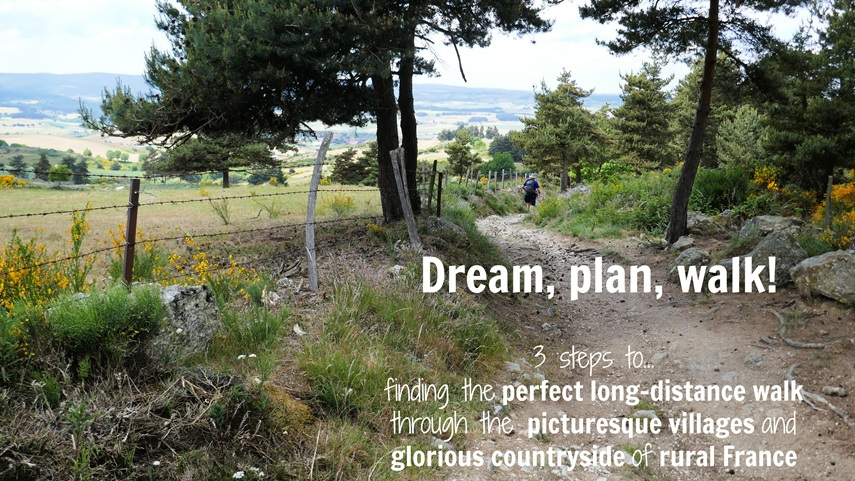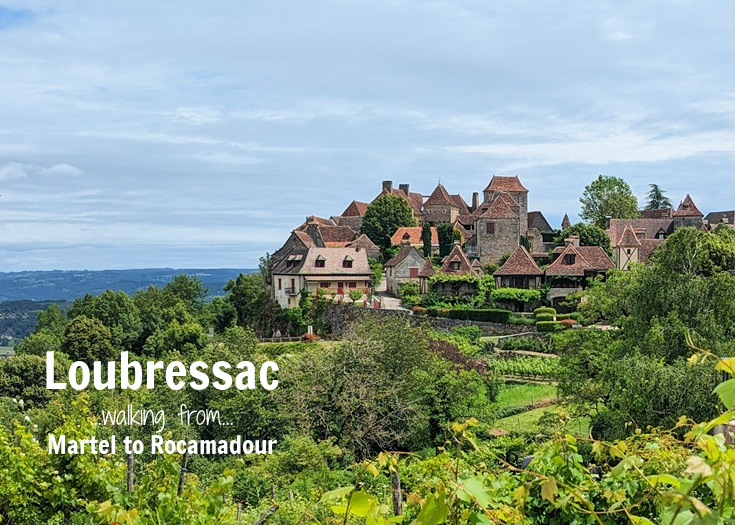
(Published April 2021, last updated June 2025)
A charming village of tiny lanes, pale medieval stone buildings covered in lush vines and surrounded by flower-filled gardens, Loubressac offers stunning views over the surrounding farmland from its vantage point on a hill high in the Dordogne region of France.
Loubressac was one of the earliest ‘most beautiful villages’ in France, earning its classification in 1983, two years after the association was formed by the mayor of the neighbouring village of Collonges-la-Rouge.
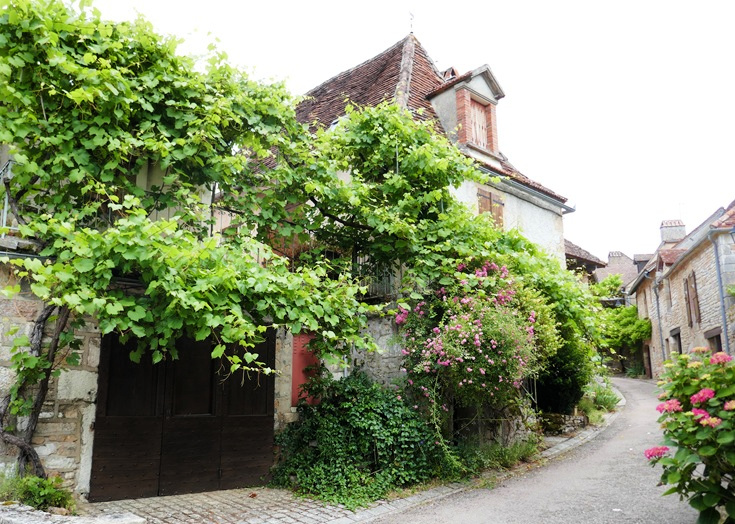
Hidden beneath a tangle of greenery, this stone house welcomes visitors arriving in Loubressac
The hilltop where Loubressac now stands was first settled during the ninth century. Five hundred years later, the village was captured by the English during the Hundred Years War and most of the buildings were destroyed.
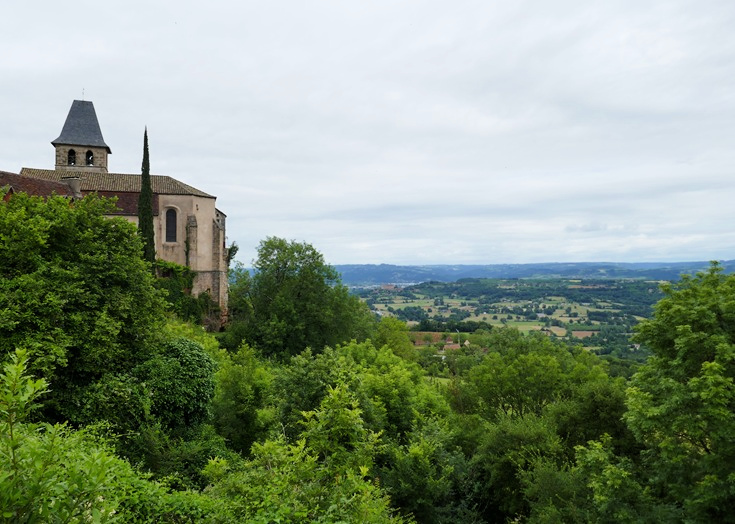
View from the lookout beside the château in Loubressac
The current château, perched at the top of the hill, was built in the fourteenth century, soon after the end of the war and provided protection to the villagers until the French Revolution in the eighteenth century. (The château is now privately owned and can only be viewed from the outside.)
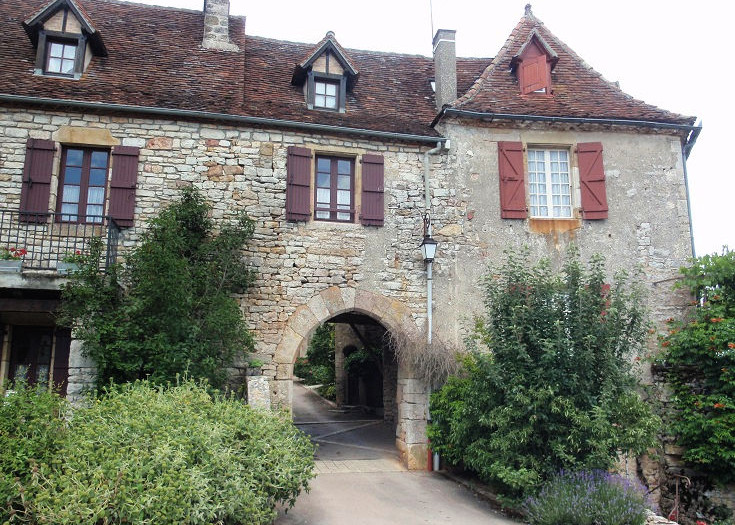
Porte d’Est
Allow an hour or two to explore the narrow streets lined with medieval houses and the old portes, or gates, into the village.
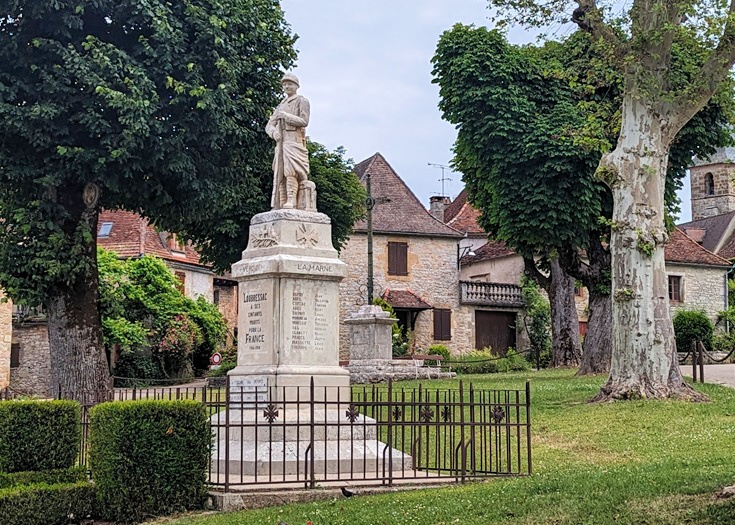
War memorial in Loubressac
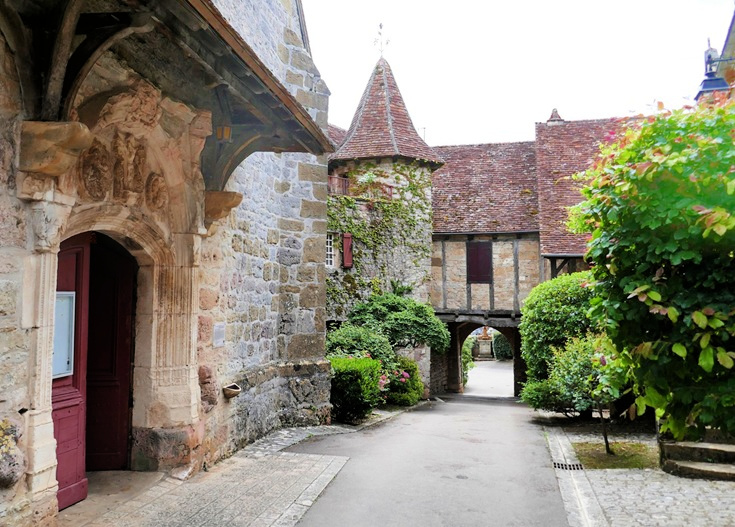
Place de l’Église and the entrance to Église Saint-Jean-Baptiste
Be sure to visit the church of Saint-Jean-Baptiste, which was built between the thirteenth and sixteenth centuries, to see the beautifully decorated altar and ceilings.
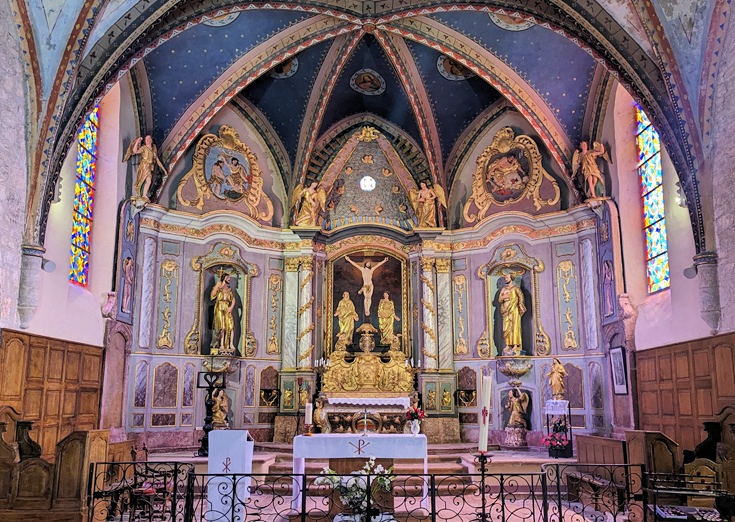
It is reported that French photographer Robert Doisneau (famous for his photo of two lovers kissing in front of the Hôtel de Ville in Paris) spent many holidays in this idyllic corner of France, often staying in the village of Loubressac. He loved the light and returned each year until his death. In August 1986, he captured a view of Château de Castelnau-Bretenoux from the vantage point beside the château in Loubressac, which you can view on his Facebook page.
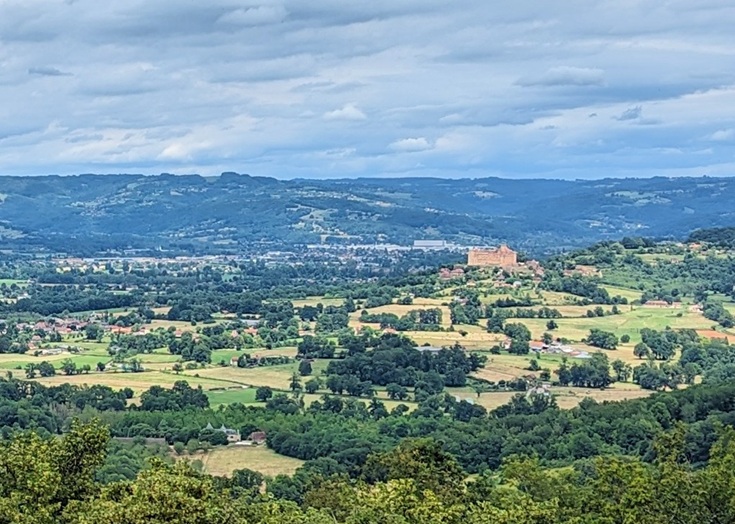
Panoramic view (zoomed in) from the window of our room at Relais de Castelnau across to Château de Castelnau-Bretenoux
The walk to Loubressac from Autoire along the GR 652 involves a challenging climb up the ridge. It’s not for the faint-hearted. In the guidebook, I suggest an alternative route that follows a quiet country road and rejoins the GR 652 shortly before reaching Loubressac. This route is only 5.5 kilometres (3.4 miles) so you may be tempted to stop for an hour or so in Loubressac then continue on the 15 kilometres (9.4 miles) further to Carennac.
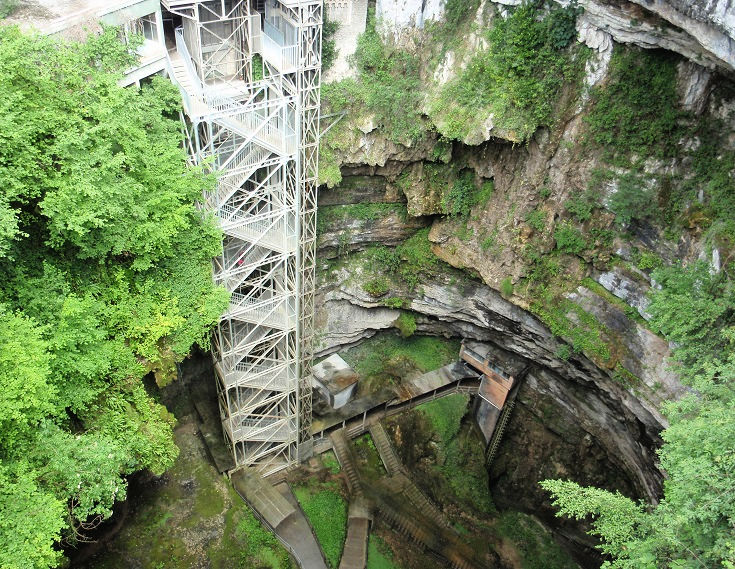
Looking into the abyss at Gouffre de Padirac
I recommend taking a slower pace, enjoying an afternoon in Loubressac and allowing plenty of time the following day to visit Gouffre de Padirac—a series of underground lakes and caves 103 metres below the surface.
Open from Easter until October, a guided tour takes you by boat along an underground river before you disembark and continue on foot past majestic stalagmites and stalactites—a breathtaking sight.
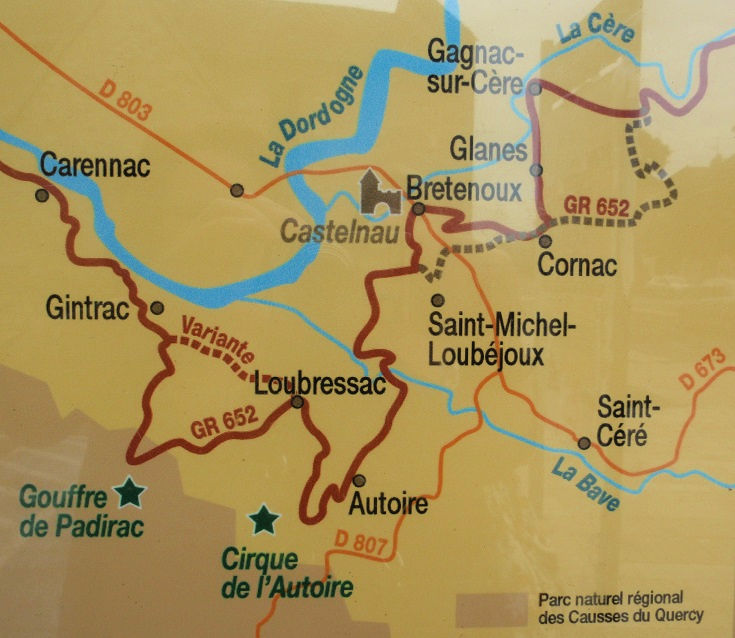
If a visit to Gouffre de Padirac does not interest you, the walk to Carennac can be shortened to ten kilometres (six miles) by leaving Loubressac along the D118, passing through the village of la Poujade and rejoining the GR 652 near a turn-off to Gintrac. Although the D118 is a fairly quiet road, always stay alert for traffic and prioritise your safety.
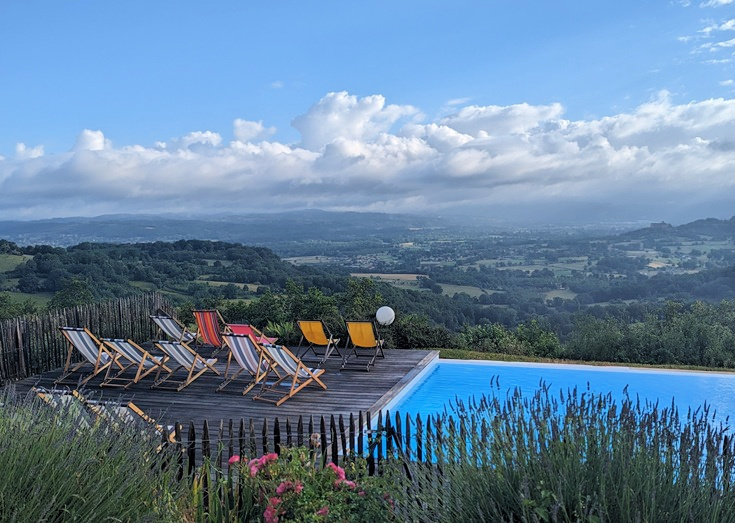
A fitting reward for a day’s walk on the terrace of Relais de Castelnau in Loubressac
FAST FACTS
Which long-distance walk in France visits Loubressac?
Martel to Rocamadour.
Look inside the MARTEL TO ROCAMADOUR (PDF) guidebook
Where is Loubressac, France? Find it on Google maps
Loubressac is 85.2 kilometres (53.3 miles) from the starting point of Martel.
If you are following my suggested itinerary for this nine-day walk, you’ll arrive in Loubressac at the end of a very short seventh day of walking—a relaxed pace which allows plenty of time to visit the fresh food markets as you leave Bretenoux (held on Tuesday and Saturday mornings) and to stop and explore Château de Castelnau-Bretenoux.
It also leaves plenty of time to explore the nine of France’s most beautiful villages which you will visit on this walk. The others are Martel, Turenne, Collonges-la-Rouge, Curemonte, Beaulieu-sur-Dordogne, Autoire, Carennac and Rocamadour.
If you prefer to set your own agenda, I share the steps I take to plan my itinerary on any long-distance walk (using the Chemin de Stevenson as a case study).
Transport options to and from Loubressac
There is no public transport servicing Loubressac but there are taxi services based in nearby Bretenoux:
Christophe Bonnet (05 65 10 88 12) and Taxi Martinez (05 65 10 90 90).
Tourist Office in Loubressac
There is no official Tourist Office in Loubressac but you’ll find helpful staff at the mairie (council) in the heart of the village. Opening hours are listed on the mairie website.
You’ll find everything you need to know about visiting the underground caves on the Gouffre de Padirac website.
Accommodation in Loubressac
Hotels
Le Relais de Castelnau
Lou Cantou 354
Chambre d’Hôte
La Chambre d’Alain (2 rooms, 4 people)
Campground
La Carrigue
How to book accommodation in French
Where to eat in Loubressac
As you arrive in the village, you’ll find a small café near Porte de l’Est and the lookout which serves light meals, snacks and hot and cold drinks. Snacks and groceries are also available from the small supermarket. Dinner is served each night at both of the above hotels.
Practical tips for long-distance walking—preparation, packing and avoiding blisters
Purchase the Martel to Rocamadour (PDF) guidebook
